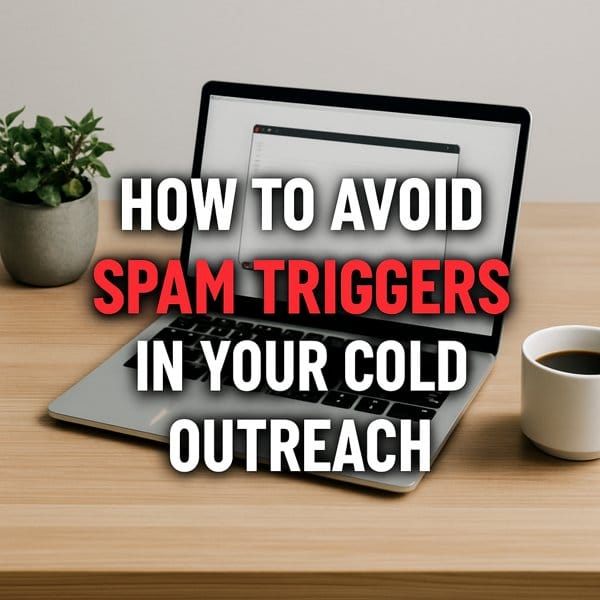How Many Follow-Ups is Too Many? Cold Email Best Practices
Cold emailing can be a useful tool for businesses. It helps them reach out to potential customers or partners. However, following up too many times can be annoying. It can make people feel overwhelmed. This article will explore how many follow-ups are appropriate when sending cold emails. We will also discuss best practices to make your emails more effective.
Understanding Cold Emails and Their Purpose
![]()
Cold emails are messages sent to people you do not know. These emails aim to introduce yourself or your business. Here are some key points about cold emails:
- They can help you connect with new clients.
- You can share information about your products.
- They allow you to build professional relationships.
- They require careful planning to be effective.
- The right approach can lead to success.
- Respecting people’s time is very important.
When sending cold emails, it’s essential to have a clear purpose. You should know what you want from the recipient. Do you want them to reply? Or maybe you want them to visit your website? Having a goal will guide your email content.
It’s also vital to consider your audience. Who are you reaching out to? Understanding their needs will help you write better emails. Tailoring your message increases the chances of getting a response.
In summary, cold emails are a way to make new connections. They need to be well thought out and purposeful. Knowing who you are writing to is just as important as the message itself.
How Many Follow-Ups Should You Send?
![]()
Knowing the right number of follow-ups is crucial. Too few may mean missed opportunities. Too many can annoy the recipient. Here are some guidelines:
- Generally, 2 to 3 follow-ups are acceptable.
- Wait a few days between each follow-up.
- Monitor responses after each email.
- If there’s no interest, consider stopping.
- Make each follow-up unique and valuable.
- Avoid sounding pushy or desperate.
For example, if you send an initial email, wait about three days before the first follow-up. If they still don’t respond, wait another week for the second follow-up. This timing shows respect for their time while keeping your name in their mind.
Statistics suggest that most responses come after the second follow-up. A survey found that 70% of replies occur within this range. Therefore, sticking to this guideline can improve your chances of receiving a response.
Ultimately, finding the right balance is key. Pay attention to how your recipient reacts. Adjust your approach based on their responses.
Best Practices for Cold Email Follow-Ups
![]()
To make your follow-ups effective, follow these best practices:
- Be polite and respectful in your tone.
- Reference your previous emails.
- Provide new information or insights.
- Ask open-ended questions to encourage a response.
- Keep your emails short and to the point.
- Personalize each follow-up message.
For instance, if you emailed about a product feature, mention it again in your follow-up. Then, add a new detail or statistic that might interest them. This strategy keeps your communication relevant and engaging.
Asking open-ended questions invites conversation. Instead of saying, “Did you receive my last email?” try asking, “What do you think about our latest offering?” This approach encourages recipients to share their thoughts.
Remember, your goal is to build a connection. Making your emails personal and relevant will increase the likelihood of a response.
Signs It’s Time to Stop Following Up
![]()
Sometimes, it’s best to stop following up. Here are signs that indicate it might be time:
- No response after multiple follow-ups.
- Negative responses indicating disinterest.
- Recipient has asked you to stop contacting them.
- Long periods without engagement.
- Changes in the recipient’s company situation.
- Lack of relevance to their needs or interests.
If someone does not respond after your third follow-up, it may be wise to move on. Continuing to contact them can harm your reputation. Respecting their wishes is also essential.
In some cases, recipients may express disinterest. If they communicate this, honor their request. Sending further emails will only frustrate them.
Finally, keep an eye on any changes in their company. If they are going through a merger or other significant events, they may not be available to respond.
Timing Your Follow-Ups Effectively
![]()
Timing is critical when sending follow-ups. Here are some tips on when to send them:
- Send emails during business hours.
- Avoid weekends and holidays.
- Mid-week days are often best.
- Consider time zones for international contacts.
- Use tools to schedule emails.
- Pay attention to industry patterns.
Most professionals are busy at the start of the week. Waiting until Tuesday or Wednesday can increase your chances of being noticed. Avoid sending emails late in the day, as people may miss them.
Time zones matter, especially for global outreach. Make sure you send your emails when the recipient is likely to be awake and working. Tools like email schedulers can help you manage this effectively.
Every industry has its own rhythm. For example, tech companies might be more responsive on certain days than others. Researching your target audience can provide valuable insights into their habits.
Analyzing Your Follow-Up Results
![]()
It’s important to analyze the results of your follow-up emails. Here’s how to do it:
- Track open and response rates.
- Monitor which emails get the most replies.
- Adjust your strategy based on data.
- Test different subject lines and content.
- Keep notes on what works and what doesn’t.
- Learn from your experiences to improve.
Using email tracking tools can help you see how many people opened your emails. This information is valuable for understanding your audience’s interest level. If fewer people are opening your emails, consider changing your subject lines.
Also, note which types of content lead to more responses. If one follow-up style works better than another, focus on that approach. Learning from past experiences can enhance your future emails.
Continuous improvement is vital in the world of cold emailing. Regularly reviewing your methods can lead to better results over time.
Conclusion: Finding the Right Balance in Follow-Ups
![]()
Cold emailing can be an effective way to reach potential clients. However, knowing how many follow-ups to send is crucial. Generally, 2 to 3 follow-ups are enough. Each follow-up should be polite and contain new information.
Signs that it’s time to stop include no response after multiple attempts or negative feedback. Timing your emails wisely can also make a difference. Analyze your results to refine your strategy.
By following these best practices, you can improve your cold email success rate. Remember to respect your recipient’s time and preferences. With patience and practice, you can master the art of cold emailing.




